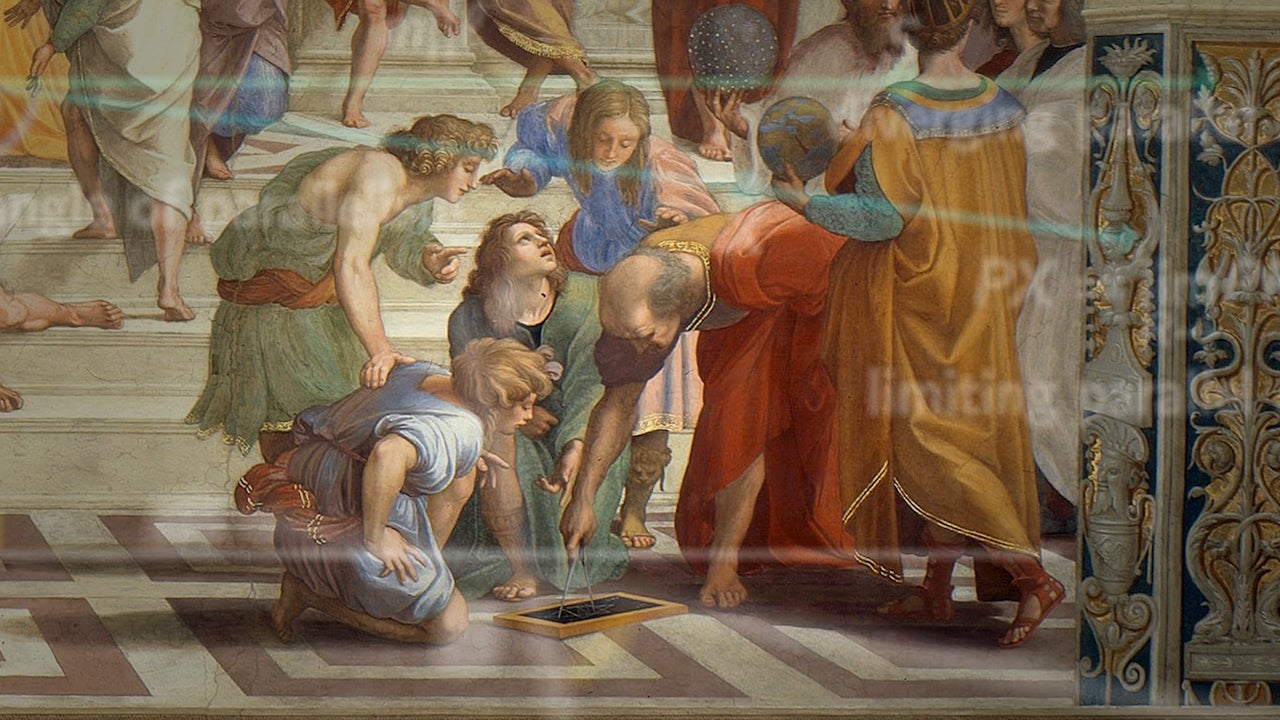
Mathematics & Natural Sciences
Mathematics and Logic: From Euclid to Modern Geometry
11 lessons
9.5h total length
Create Your Account to Get Instant Access to “Mathematics and Logic: From Euclid to Modern Geometry”
Discover the fundamental principles of mathematics and right reasoning.
Lessons in this course

24:10
lesson 1
Mathematics and Liberal Education
Mathematics is central to the liberal arts because it contributes not only to practical actions that involve war, honor, economics, and justice, but also extends to knowledge of the most fundamental and eternal things. For more than 2,300 years Euclid has provided a foundation for uncovering these truths about reality.

25:08
lesson 2
The Fundamentals of Logic
The ancient Babylonians and Egyptians developed mathematics through trial and error in order to serve practical purposes. The Greeks transformed mathematics by pulling geometric objects out of the concrete and into the abstract. This new development in mathematics emphasized obtaining knowledge through reason, not experience, and paved the way for many new discoveries.

30:36
lesson 3
Deductive Reasoning and the Transformation of Mathematics
The Pythagorean proof of the irrationality of the square root of two and Euclid’s proof of the infinitude of primes serve as classic and important examples of deductive reasoning. Both proofs reveal the beauty and seriousness of the best mathematical inquiry.

28:07
lesson 4
“Begin at the Beginning”: The Axioms of Euclidean Geometry
Euclid begins the Elements with a list of 23 definitions and ten axioms, and from this foundation is able to derive 465 propositions over 13 books. This grand achievement reveals the depth of knowledge that can be gained from an axiomatic system that is complete, independent, and consistent.

28:51
lesson 5
Neutral Geometry: The Early Propositions of Euclid's Elements
Euclid only uses postulates one through four in the first half of Book I of the Elements. These early construction propositions of neutral geometry provide Euclid with essential tools for building subsequent arguments in the Elements.

25:30
lesson 6
Euclid’s Fifth Postulate
Postulate five, often referred to as the parallel postulate, is employed only once in all of the Elements. Euclid’s use of this controversial postulate in Proposition 29 set the stage for centuries of debate and discovery in mathematics.

28:18
lesson 7
Euclid’s Proof of the Pythagorean Theorem
The climax of Book I of the Elements is the Pythagorean Theorem. Perhaps the most famous proof in all of mathematics, Euclid demonstrates that it is not simply an algebraic proof, but a geometrical one as well.

34:14
lesson 8
Number Theory and Solid Geometry in the Elements
While Euclid is best known for his work in plane geometry, the Elements pursues many other areas of mathematical inquiry. Books II-XIII of the Elements include important discoveries in number theory, solid geometry, and more.

23:12
lesson 9
Euler and the Birth of a New Geometry
One of the most important figures in the history of mathematics is the eighteenth century mathematician Leonhard Euler. Through his attempt to solve the Königsberg Bridge Problem, Euler developed a new discipline in mathematics: graph theory.

25:51
lesson 10
The History of the Fifth Postulate
The history of mathematics is full of attempts at proving Euclid’s Fifth Postulate as a theorem. Many important discoveries in geometry have been made as a result of these failed attempts.

24:23
lesson 11
Non-Euclidean Geometry
Among the mathematicians who attempted to prove the Fifth Postulate were Carl Friedrich Gauss, János Bolyai, and Nikolai Lobachevsky. Although each worked independently of the others, all three came to the same conclusions, which serve as the foundations for non-Euclidean geometry.
Watch the course trailer
Enroll in "Mathematics and Logic: From Euclid to Modern Geometry" by clicking the button below.
What Current Students Are Saying
It presents the concepts in a very clear, understandable fashion. I’ve never been a “math person,” but I’m able to grasp the concepts, follow along, and enjoy the course.
Create your FREE account today!
All you need to access our courses and start learning today is your email address.